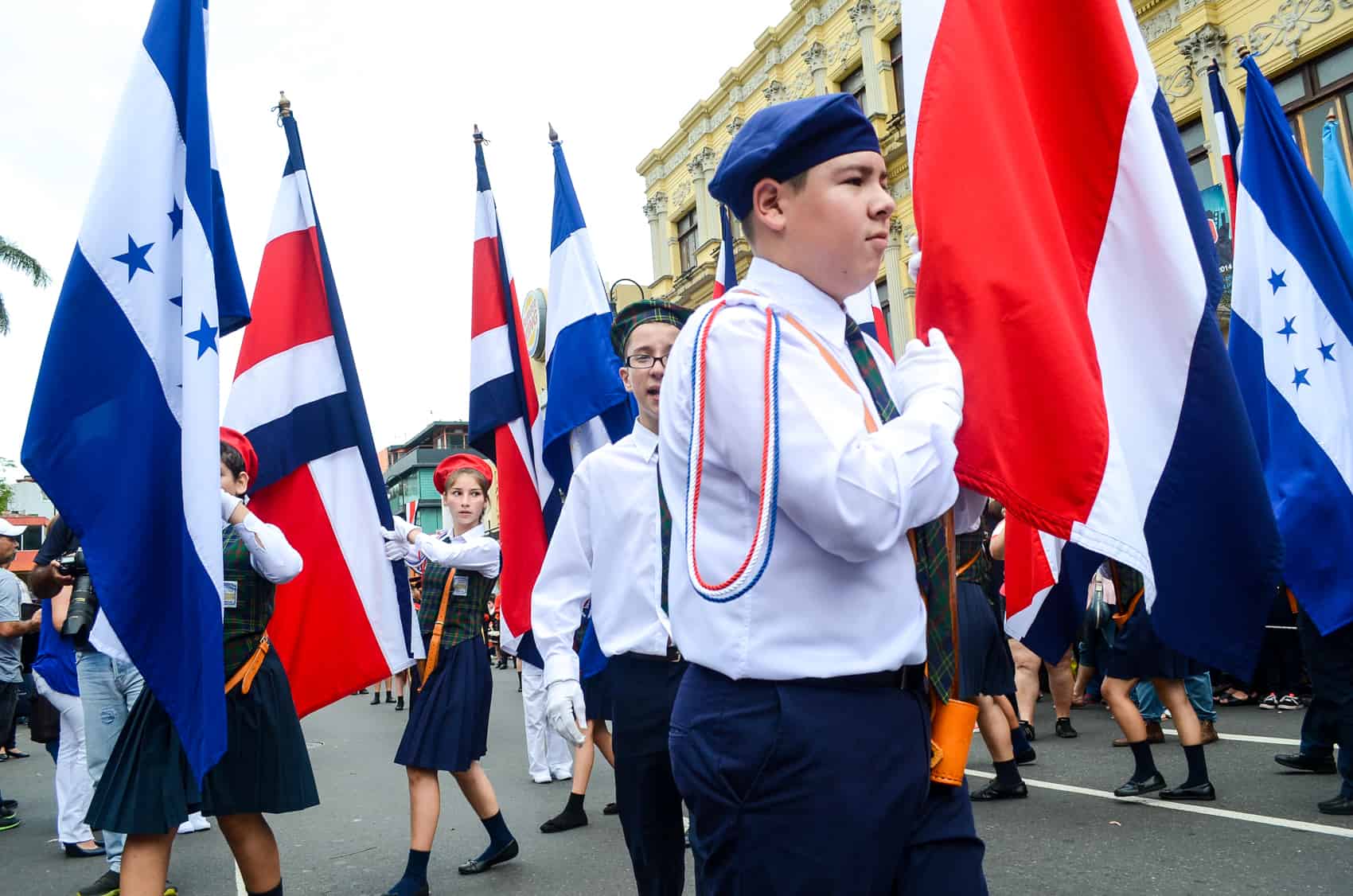To celebrate Costa Rica’s birthday this year, the members of The Tico Times newsroom decided to sing the country’s praises. Whether this is our native country, our adopted country for life, or our temporary home, each of us took a moment to reflect on what we like best about the land we report on each day. Below, a look at a few of our favorite things – from icy desserts to the pleasures of the open road.
1. Its diminutive size
People in this country constantly complain about certain things that, apparently, “only happen in Costa Rica,” and oftentimes they attribute the cause of their discomfort to living in such a small country. I’m perfectly clear on the disadvantages of living in a country that’s smaller than several U.S. cities. However, Costa Rica’s size is one of the reasons why my country still amazes me.
With a little organization it is possible for you to experience the diversity of our microclimates in one day. You can leave any city in the Central Valley in the morning and be lying on a beach on either the Caribbean or Pacific coast before noon. That same day, you might decide whether to spend the afternoon rafting or ziplining in a tropical forest, walking on suspended bridges over the trees of a cloud forest, or taking a horseback ride with a great sunset in a dry forest. And that will even leave you enough time to witness an active volcano at night. With a little research, Costa Rica will reward you with options for all kinds of budgets that in big countries are just not possible.
The tourism industry can still improve and the country’s infrastructure definitely needs a boost, but there are plenty of options for making the most of your time here… and travelling along some of our not-so-great roads can be part of the adventure.
2. The glorious, underappreciated palm fruit
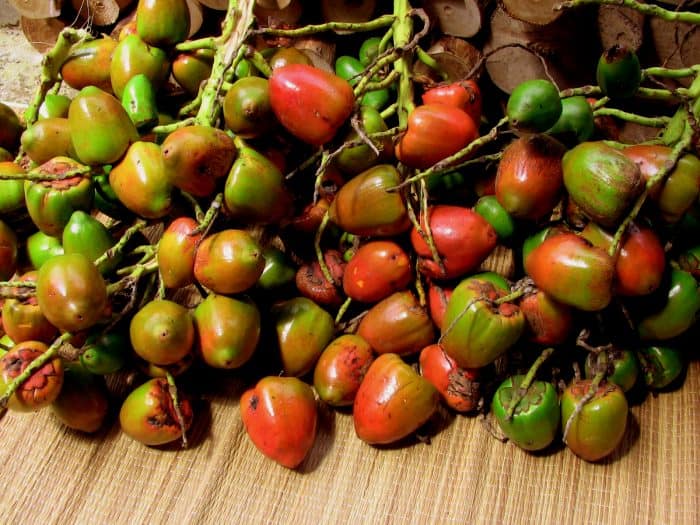
You may have seen them hanging from a market stall in a heavy-looking bunch, or floating in a metal trough in piles of vivid red, orange, yellow and green. You may not have known what they were, or how delicious, or historically indispensible they are. I’m talking, of course, about the pejibaye, also known as peach palm fruit. Besides coconuts, they are, perhaps, the most wonderful palm fruit on the planet.
After arriving in Costa Rica, I walked past the pejibaye stands for months at my local feria without giving them much more than a sideways glance. Once or twice I tried a sample from a vendor — a slice of boiled, salted pejibaye with a big dollop of mayonnaise —and I wasn’t convinced I needed to go further than that. But recently, I finally bought some. And my husband and I made pejibaye cream soup. And it was yummy. And then we bought some more and made pejibaye patties. And they were yummy. And now I’m hooked.
It is possible, though, that even more than the taste and versatility, I’m enamored with the history of the pejibaye, which I knew nothing about until I started looking into it. Pejibaye is, as far as I can tell, the most widespread living tradition linking modern-day Costa Rica to its pre-Columbian past. It was the main crop of many Amerindian groups living in tropical forests from Honduras to Bolivia, according to the U.N. Food and Agriculture Organization. It was the maize of the jungle — and still is among some South American tribes.
Native people ate it in ways Costa Ricans and other Latin Americans still do commonly today, but they also made a slightly, and more-than-slightly fermented drink (chicha) out of it. They turned the fruit into flour, the wood into building material and used the roots as medicine. The oldest known evidence of humans using pejibaye comes from sites in Costa Rica — on both coasts — dating between 2300 and 1700 BC, according to the FAO. But because it decomposes so quickly, especially in the humid tropics, plenty is still unknown about its history.
So this 15 de septiembre, I’m toasting (wish I could find some chicha) to the noble pejibaye. May you pick some up next time you’re at the market, and try out a new, or ancient, recipe.
3. Road tripping on the scenery
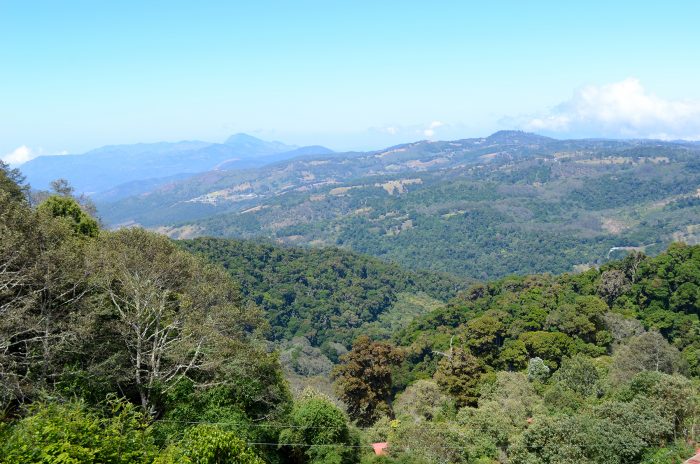
Ask anyone who’s lived in Costa Rica a while about driving here and you’re guaranteed to get an earful. Stories of potholes big enough to swallow a car and impossible way-finding (when there is any) abound. But get out of San José and driving around the countryside is one of Costa Rica’s simple, one-of-a-kind pleasures.
Even some of the least appreciated parts of the country offer up incredible scenery rushing by the car window. Returning from a weekend of diving in Playas del Coco one Sunday I couldn’t keep my eyes off the scene through the bus window as we passed through Bagaces and Cañas. The ocher dirt of the road’s shoulder rose into tall yellow grass, blended into the green canopy of an higuéron tree at the foothill of mountains painted purple in the afternoon light. The sky was a blue pastel before the sunset splashed everything in pink, orange and deep red.
A recent reporting trip took me to Nicoya for the 25th of July but with no hotels in town, the closet place with room was Sámara (tough compromise, I know). The drive took us past neon green hills dotted with tufted crowned palm trees like something out of a Dr. Seuss book. White barked giants stretched their vine-draped branches out over the road. It was like an amusement ride, these fantastic scenes rushing by as we careened around the slopes and curves of the road. We made that 45-minute drive from the beach to town easily a handful of times. It was the highlight of my weekend.
You could be lost, running late, or contending with a semi truck barreling down on you, but don’t sweat it. It’s beautiful.
4. El copo
During my first year in Costa Rica, I went to the festejos populares in Puntarenas, and learned the hard way that beers drunk on an incredibly hot day can affect you more strongly than you’re expecting. I was in a bad way, so my date said: “You need a copo. The sweetened condensed milk will coat your stomach and sober you up.” I’m still not sure about the science behind that claim, but by God, it worked, causing me to marry my date – well, not immediately – and become a devotee of the copo, the super-sweet shaved ice concoction best savored on a hot day. The vendor, who in my memory is inevitably a sweaty, cheerful and roundish man, will scrape the ice shavings off of a huge block you’d love to set your burning face against; douse them in your choice of brightly-colored sugar syrup; and then add the best part, the leches, both powdered (Leche Pinito, natch) and sweetened condensed. The Puntarenas classic, the Churchill, is a bigger, more kingly copo, sometimes served with your own tiny tin of milk to pour over the top.
The copo is not particularly tied in my mind to Independence Day, a date I associate with late-winter rains and the dark, cozy glory of the farol parades. However, I mention it here because it represents a few of my favorite qualities of Costa Rica: the extraordinary sweet tooth; the fact that, like San José, it’s a bit of an acquired taste; the fact that it’s best when its simplest, an ice block on a beach and something to cut it with; and the way the copo, like life in Costa Rica, really can’t be rushed. When we mix sugar and ice in the United States, we stick a straw in it, call it a Big Gulp and drink it in our cars, but a copo must be savored. Unless, of course, you’ve had too many beers in the hot sun. In that case, well, get it down you.
4. Extreme adventure
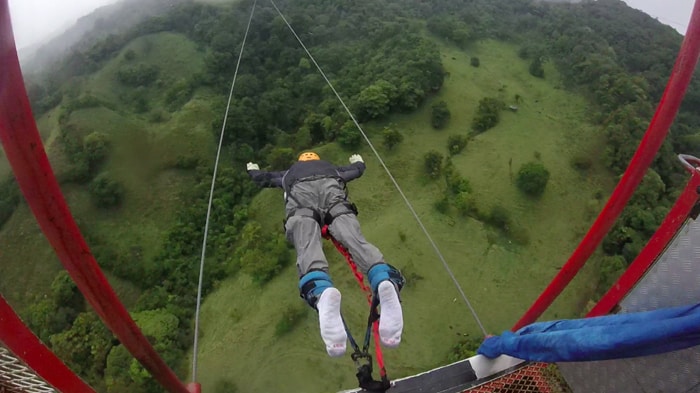
I like Costa Rica for big adventure, and the more terrifying the better. I once went horseback riding, whitewater tubing, canyoning/rappelling/rock climbing and ziplining in a single day in Rincón de la Vieja — best day ever. I’ve also gone ziplining in Arenal, Monteverde, Montezuma and Puerto Jiménez, and it never gets old — but my favorite was flying Superman-style on a nearly mile-long cable stretching between two mountains in Monteverde.
I’ve been ocean kayaking in Sámara, where I got stranded on an island by a huge thunderstorm. I’ve gone waterfall rappelling in the Osa Peninsula, where I also climbed a strangler fig and then got yanked into a giant Tarzan swing. (I have a little joke that there are so many Tarzan swings in this country that I expect one at every gas station.) I’ve gone whitewater rafting on the Pacuare (three times) and mangrove kayaking in the Osa (twice, and on one occasion I swam in a small lagoon with a dolphin and her calf).
I’ve seen peccary and tapir in Corcovado, spotted a quetzal on Cerro de la Muerte, accidentally touched a scorpion in Tamarindo and purposely touched a hognose pit viper near Turrialba. (Oh, and I once got mugged in Playas del Coco — talk about adventure!)
The highlight and, yes, my most terrifying exploit, was bungee jumping in Monteverde. But by far the most dangerous thing I’ve done in Costa Rica is … drive my car down the road on a winding mountain highway in the rain. Say, anyone up for skydiving?
6. No army
A lot has been said about Costa Rica’s decision to abolish its army in the mid-20th century, and critics like to say that without the backing of the United States, Nicaragua’s bellicose President Daniel Ortega likely would have invaded years ago. Colombian drug traffickers have claimed that without the heavy presence of CIA and DEA in Costa Rica, Colombia’s rebel army FARC probably would have kidnapped a prominent Gringo tourist from one of Guanacate’s pristine beaches by now.
On the other side of the argument, peace advocates are weary of the increasing “militarization” of Costa Rica’s police forces. (Don’t believe them? Check out our recent story on “The Beast,” Costa Rica’s new crime-fighting machine.) Modern-day challenges like the U.S.-backed drug war aside, on a philosophical level, this issue to me is among the country’s greatest achievements. And there have been many.
The unparalleled profits generated by global arms sales at the expense of incomprehensible suffering by millions (usually the poor) in armed conflicts leave one bewildered and saddened – in an Albert Camus kind of way. Yes, the cost of living is through the roof, people “don’t know how to drive” and the public infrastructure is falling apart, but if nothing else gets you going in the morning with a smile over a cup of yodo from la zona de los santos, think about this: We don’t have an army. No soldiers sent to have their legs blown off in a meaningless war, no government-sponsored killing campaigns, no war profiteering. That, to me, is pura vida.
7. The unapologetic obsession with fútbol
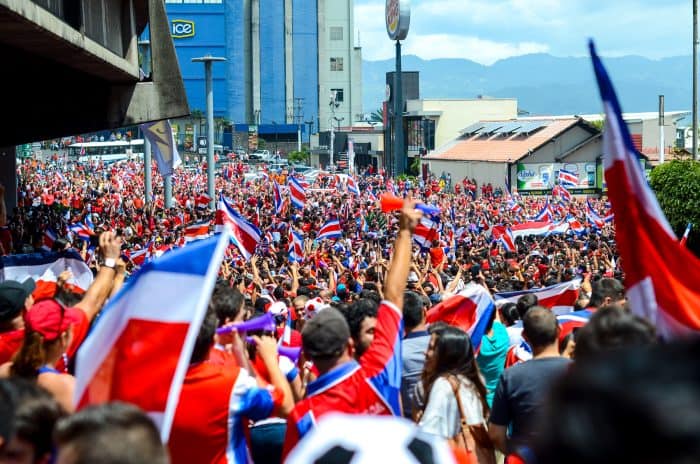
It was right about the time that I was submerged into a crowd of thousands of red-shirted strangers, all chanting “Oé, Oé, Oé” on Calle Central, that I realized this country had a problem. Right after Costa Rica’s shootout win over Greece in the World Cup knockout stages, the capital erupted with an energy that could only have been triggered by the country’s one true love: football.
This deep level of passion for sports can be both a sickness and a cure, cycling between a perpetual argument and an eternal opiate. But there’s no doubt that in Costa Rica, where sometimes locals can seem too apathetic or unworried to the foreign eye, football holds a near-mythical power to grab peoples’ attentions.
Despite following and covering sports for my entire life, I had never witnessed, and probably never will again witness, such a strong reaction stirred up by a game as I did on that June afternoon last year in San José when the men’s national team reached its best ever result in the World Cup.
On the streets, I saw a young metalhead hug an elderly woman he didn’t know. Minutes after colliding in a minor car accident, two men laughed it off and embraced each other. And the country’s president walked down the street from his house with barely any security around him just to greet the sea of people celebrating at the Fuente de la Hispanidad.
News channels showed footage from other corners of Costa Rica and, from the countryside to the beaches, the nation was awash in a proud fury. The entire country was alive in a way I had never seen before and it was all fueled by Costa Ricans’ burning obsession with the world’s game.
So for newcomers and travelers to Costa Rica, the easiest piece of advice I can give for making new friends here is to start talking football. Don’t speak Spanish? Don’t know anything about sports? That’s fine. Just say the words, “Keylor Navas es un crack, mae” and everyone around you will immediately like you.
8. The beaches
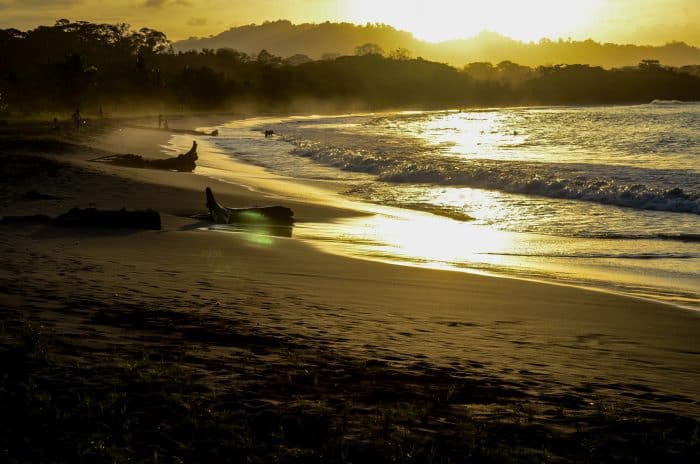
A trip to the beach is quite simply the most pleasant experience that Costa Rica has to offer. I must say that the best thing about it is that you can find a beach just an hour from San José; if you go farther afield, to the stunning beaches of Guanacaste, for example, it will take you a few more hours, but is totally worth it. The day before, when you go to bed knowing that the next day you’re visiting the coast, the excitement starts, increasing when you get up in the morning and start packing your things into the car to finally start the trip.
Once there, you get out of the car, stand barefoot in the sand, and feel its warm and soft texture under your toes, while the sea breeze blows through your hair. Definitely, there’s no better feeling in the world. Then, you can just lie down under the cool shade of a palm tree, watching the waves as they are born on the horizon; a couple of children waiting to jump into those waves, just like a couple of surfers beyond them; on the shore, a group of people running from one side to the other while playing a soccer game; and behind you, a group of little monkeys playing in the trees. You chat with your friends or perhaps sing along with a guitar, just to end up heading into that cool, refreshing salt water.
But the best part comes in the afternoon. To watch the sunset at the beach, while lying on the sand, is more than perfect. The sun gets that intense orange color, and seems to be twice as big as before. When it sinks, it starts coloring the water on the horizon, which then expands to the shore. When you can no longer see the sun, which has already set behind the sea, the sky turns an intense pink color mixed with orange and a little bit of purple, then a light blue which starts to disappear. Finaly, the dark blue color of the night arrives along with a thousand sparkling stars and the huge and white full moon lighting up the sea.
9. The kindness of strangers
As in most places, life in Costa Rica can be particularly frustrating, dangerous, and humiliating for foreigners. But by some kind of magic, a kind stranger will almost always appear and throw me a lifeline when I need it most — a humbling and heart-warming experience every single time.
A few years ago, I was standing on a packed school bus flying down a muddy mountain road in a downpour when I realized the empanadas I’d eaten didn’t agree with the hot, humid roller coaster of a bus ride. I ripped open the nearest window (drenching the horrified mother and child in that seat), stuck my head out and launched my breakfast into the rain. Pale and sweating, I turned back to a sea of shocked stares. I began to wish I’d thrown myself out the window, too, when a young man stepped forward and silently offered me a smile, a piece of mint gum and a plastic bag.
The day I went to the local health clinic to get my insurance card, I arrived and slipped in behind the two people in line at the window, delighted at what looked to be a short wait. In Costa Rica, the elderly, the pregnant, the disabled, and people with babies are allowed to go to the front of most lines, as they should be. But since that gives priority to almost everyone seeking medical attention, it’s mathematically impossible for a young, healthy, childless person to make it to the front of the line at a clinic. I started third in line and was soon twelfth, as my lunch hour ticked by. Aware that my little conundrum was the least important one in the room, I decided to leave. Just then, a tiny elderly woman shimmied her walker up to the window, flashed a mischievous smile, and waved me forward to cut in front of her.
This magic has also worked deep in the jungle when I thought I was at least a dozen miles from the nearest kind stranger. Last Christmas my boyfriend and I were out counting birds on the slopes of the isolated Cacao Volcano when we realized we were covered in hundreds of tiny ticks. We stripped down to our underwear and were hopping around swatting at each other when a biologist emerged from the foliage like some kind of tropical fairy and told us that ticks can be removed with duct tape, which we had!.

